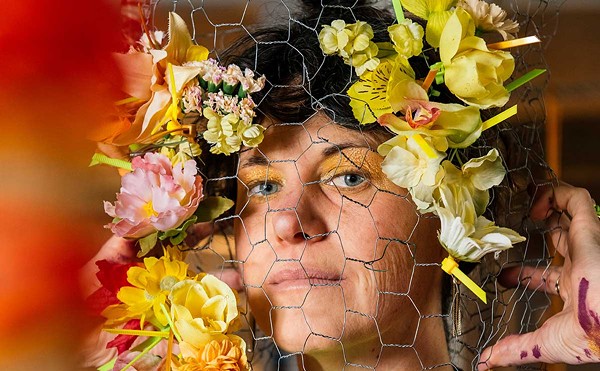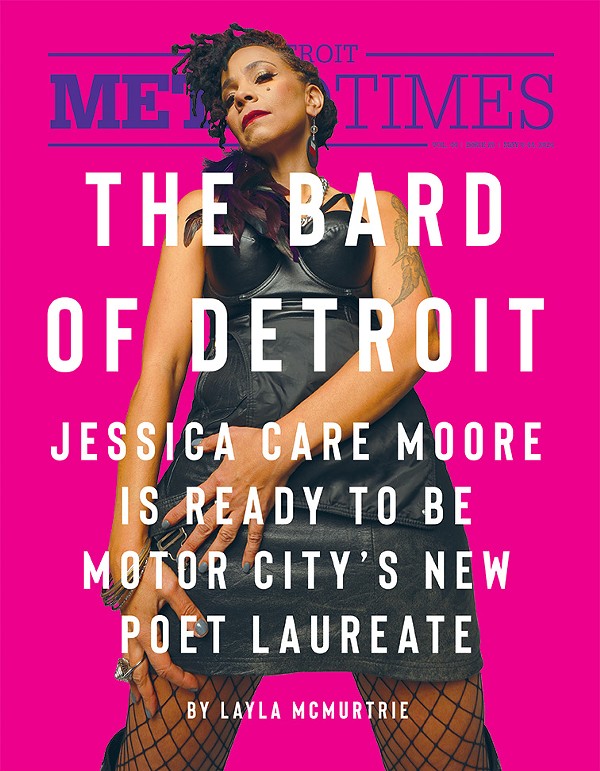“All my suitors have turned into doctors.”
After suffering from a near-fatal bus accident at the age of 15, a young girl who embodies the qualities of both her German father and Mexican mother is forced by fate to turn her sights on painting. Looking for artistic feedback, Frida (Salma Hayek) approaches world-famous political muralist and womanizer Diego Rivera (Alfred Molina). Together they begin a mythically tumultuous relationship amid a torrent of beauty and inspiration.
Frida, based on Hayden Herrera’s biography of Frida Kahlo, follows the life of a woman known for her soul-piercing gaze and truthful self-portraits that magnified (instead of beautified) her eyebrows that met in the middle, her moustache shadow and constant physical anguish.
Mexican-born Hayek wears masculine-caustic just as easily as seductive-exotic, and moves comfortably within Kahlo’s world surrounded by parrots, monkeys and revolutionaries. Winning out over competing “Frida” projects that featured Jennifer Lopez or Madonna in the title role, Hayek not only starred in the film, she became its undying figurehead, fighting for producer status to ensure that the “right” Frida Kahlo film was made. She also enlisted the help of big-name friends to ensure the film’s completion: buddy Ashley Judd in the role of photographer Tina Modotti, and boyfriend Edward Norton as Nelson Rockefeller. (Norton also rewrote the script for free.)
Director Julie Taymor was schooled in Indonesian theatre — which has a visual as opposed to textual priority — and focused on acting, dance, puppetry and music. Taymor has garnered praise for her direction and original costume design (as well as co-designing the masks and puppets) for the stage version of The Lion King, and for her direction of such operas as The Magic Flute, Salome and The Flying Dutchman. Her postmodern, no-holds-barred (no matter how gruesome) feature Titus met with a mixed reception, like the Shakespeare play it’s based on, but the over-the-top surreal imagery that composes Titus seems to have been substantial preparation for Frida. Taymor has turned a fantastic, calamitous life into a visual discourse diving deeply into personal pain, with vivid documentation and celebration embedded in a fractured spine, crushed pelvis and broken foot.
It may be disappointing to Kahlo fans that the film focuses more on the romance between Kahlo and Rivera than on the relationship between Frida and her paintings. From intensely expressive portraiture to primal-surreal mindscapes of the painter’s inner reality, Taymor illustrates and punctuates Kahlo’s life (with and without Rivera) with Kahlo’s bizarre and fantastic images, adding another dimension by stirring them to life, and melding Kahlo’s thoughts and movements back into the disquietingly self-aware paintings.
Taymor’s Frida has the heightened emotion and color of artist-bio classics such as Lust for Life (1956) and Moulin Rouge (1952), but not the consistency. This is the price Taymor pays for taking great artistic risks that range anywhere from jaw-ajar triumphant to comic schlock. Even though you know it’s coming, the slow-motion bus accident will have you gripping your seat during this exquisite, magical tragedy covered in gold dust, followed by an extraordinary Day of the Dead puppet sequence executed by the Brothers Quay. However, Diego as King Kong frothing at the top of the Empire State Building comes off as cheese-ball ridiculous next to passionate scenes imbued with a potent Mexican aesthetic.
What Hayek and Taymor’s Frida doesn’t do is give an idea of the range of important people and artists who surrounded the magnetic couple. Their legendary circle included the likes of Marcel Duchamp, Sergei Eisenstein and Pablo Neruda — and although Frida touches on a trickle of Kahlo’s affairs (including Trotsky, played by Geoffrey Rush), we don’t get to see Rivera chasing one-sock-missing sculptor Isamu Noguchi away with a gun.
What the film does do is ignite your insides with a direct umbilical cord to the fascination of pain in the guise of a crushed wildflower, continually trying to straighten its stalk and never making it, but showering the struggle in fiercely beautiful truths.
That same fire that lived inside a vivacious young girl also lived inside a woman’s crippled body, forced to redirect itself onto canvas through metaphors of the mind. By choosing strength over self-pity, Kahlo has become a death-defying icon who dressed herself in spectacle while taunting and nurturing her talent within the marriage between an elephant and a dove.
Anita Schmaltz writes about film for Metro Times. Send comments to [email protected].





